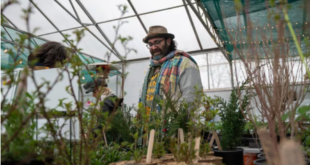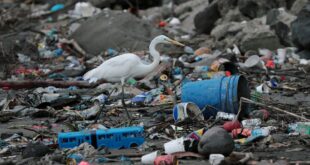The project is a collaboration between Western University and Proto Manufacturing in LaSalle.

Tucked away in an inconspicuous-looking building on the outskirts of LaSalle, Ont., a team is building a machine that might one day go to Mars.
This project, known as ISXRD, is a highly portable, compact x-ray diffractometer: A machine that can tell scientists the composition of a material through a series of x-rays. It’s a collaboration between LaSalle’s Proto Manufacturing and Western University, and the project has received funding from the Canadian Space Agency.
With years of work ahead, it might some day change how scientists think about and analyze soil samples collected in space.
“The end goal would be extraterrestrial, with the focus being on Mars,” said Stanislav Veinberg, one of the project’s application scientists and project development manager.
“You can actually map, almost, the history of a planet based on the rocks or the formations that you can find …. so if you take a rock and you do find some remnants of water in there that could hint to, there’s water on Mars.”

The main difference between this machine, and other machines like it — including one that’s currently in space — is that it can x-ray specimens in place and doesn’t need to drill them into a powder before they can be analyzed, meaning it can provide results without having to alter the sample.
“If you have weird samples that can’t necessarily be inserted into a machine, you can use this without necessarily having to destroy the specimen,” said Izabela Kolodziej, an application scientist on the project.
While sending the machine to Mars is, to put it lightly, a while away, the machine has other applications: research work like geology and archeology. It could be used by the military, to determine whether an explosive had gone off in that particular location or whether soil is contaminated with radiation.
Currently, other types of this machine are used in the pharmaceutical industry and some natural history museums also use x-ray diffractometery to determine the composition of artifacts.
But on Mars, it could open a new frontier of research, telling scientists a “history” of sorts of the planet’s surface: when and where a meteor hit the planet, and even whether there was water present.
The project first got underway in 2019, when Western University earth sciences professor Roberta Flemming reached out to Proto with her vision of what the technology could look like.
Building the model started in 2022. And last fall, the team had a successful field test, using real Mars minerals to test the ISXRD in Proto’s parking lot. It could deliver reliable results in as little as 17 minutes.
“It’s a very complicated design because critically, you have to get the science right, but you also have to make it small, which means less power,” Flemming said in a Western University statement.

“When you try and scale down something for space that normally fits in a lab, you have to figure out a way to power it with a lot less energy. And you have to make it robust enough that it could survive the launch and landing, and small enough to mount on a rover arm, but sophisticated enough to move the way we need it to move.”
From here, the team is submitting their reported results and awaiting news on the next round of funding. If they’re successful, it’ll be a five-year project to make the machine more autonomous and durable enough to withstand the cold temperatures and low pressure of space.
“Making sure that as soon as we send into space, it doesn’t just fall apart,” Kolodziej said.
Both Veinberg or Kolodziej say they never thought their careers would take them to making tech that could one day be in space.
“I think that’s actually one of the exciting parts is that it’s not something I would have envisioned facility in Windsor doing. When I think of space projects, I think Toronto or Montreal,” Kolodziej said.
“Windsor is known for its automotive industry, but there’s a lot of promising science careers and I think it’s awesome that this is one of them … I never thought my career would take me here.”
*****
Credit belongs to : www.cbc.ca
 Atin Ito First Filipino Community Newspaper in Ontario
Atin Ito First Filipino Community Newspaper in Ontario






